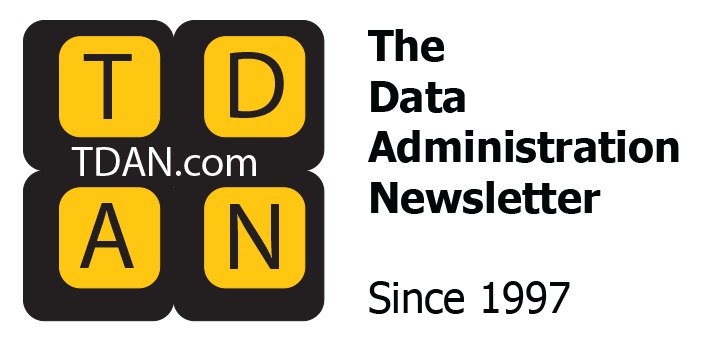
The HealthTech industry is a by-product of the digital transformation currently underway in the health and wellness sector. Thanks to electronic health records (EHRs), genomics, wearables, and telemedicine, this growth is not even close to slowing down.
Adding to this momentum is the projected volume of global healthcare data expected to reach 2314 exabytes by 2025. As a result, establishing efficient data management strategies becomes not just optional, but mandatory. As your data volumes grow, you must implement proactive measures to drive innovation, improve patient outcomes, and maintain public trust.
This article explores the evolution of data in the healthtech industry, the key trends defining data governance in the sector, and the best practices to consider implementing along the way.
Understanding the Evolution of HealthTech Data
Healthcare organizations today manage massive, diverse, and complex datasets, yet most of their data is rarely used to improve processes or inform decisions. Due to data silos across lab systems and insurance platforms, you may encounter operational inefficiencies and incomplete patient records.
Regulatory complexity exacerbates the impact of these data challenges by imposing significant penalties for non-compliance. In 2023, the U.S. Office for Civil Rights had to pay over $4 million in fines for exposing the data of 167 million Americans in cyberattacks. To prevent this situation, you must map all data sources and flows across your organization to identify and eliminate any gaps, non-compliance issues, or problematic silos.
4 Key Trends Shaping Data Governance in HealthTech
With that in mind, let us explore some of the most pivotal trends currently shaping data governance and healthtech software development best practices.
1. AI and Automation in Data Governance
AI and machine learning are not only transforming healthcare, but also introducing new governance challenges. For your AI models to work properly and for your predictions to remain reliable, you have to rely on vast and updated datasets. If your AI models are not refreshed regularly, you may be vulnerable to bias in training data, leading to inequitable care.
All of this makes detecting and mitigating bias a priority for data governance. Moreover, you should establish transparency and accountability for your AI-driven decisions, as you cannot trace or correct adverse outcomes otherwise. As a result, implementing automated data quality checks and bias detection has become inevitable in AI pipelines.
2. Privacy-Enhancing Technologies (PETs)
Healthtech organizations are increasingly relying on privacy-enhancing technologies such as homomorphic encryption, differential privacy, and federated learning. These technologies help organizations comply with the stringent laws associated with GDPR or similar regulatory frameworks.
These emerging technologies can help you enable data sharing and research to safeguard patient privacy. As lawmakers move toward prioritizing public interest in data use, consider integrating PETs into your data architecture.
3. Real-Time Data Governance
As data governance becomes increasingly important, the demand for real-time, data-driven decisions is rising, especially in clinical settings. You must ensure that your governance frameworks can handle streaming data from IoT devices and analytics platforms. For immediate and informed decision-making, you must ensure that all your data is accurate, secure, and compliant.
4. Regulatory Evolution and Globalization
Healthtech is becoming increasingly global, forcing organizations to work through a patchwork of regulations. Regulatory frameworks such as HIPAA, CCPA, and GDPR are good jumping points for a highly effective governance process. As a result, organizations must shift towards alternative legal bases and sophisticated compliance strategies.
You can manage regulatory evolution by developing a compliance matrix that maps all applicable regulations across different jurisdictions. It is also recommended that you adopt interoperability standards that facilitate secure and compliant data exchange.
6 Best Practices for Future-Proofing Data Governance in Healthtech
Keeping up with the emerging trends in the healthtech industry is not as easy as it sounds, but here are some of the best practices to help you future-proof data governance in your organization:
1. Establish a Data Governance Council
Consider establishing a competent data governance council by including the most experienced personnel from IT, clinical, management, and compliance in your organization. According to a 2023 Gartner report, organizations with well-established governance frameworks tend to experience a 20-40% reduction in errors.
For example, Celcom, one of the leading telecom companies in Malaysia, sped up data deduplication by 30 times after implementing a governance framework. This enabled the company to make informed decisions faster by utilizing governed data.
You should also assign specific roles, responsibilities, and access controls to every person on the council. You must also include escalation paths that each member should take in case of any governance issues and assign clear ownership for high-risk decisions. Seek executive sponsorship for your council, as it can help your governance initiatives scale.
2. Integrating Governance Within the Data Lifecycle
The global data volumes have already reached 149 zettabytes as of 2024, with millions of terabytes created every day. When dealing with such massive data volumes, manual governance is quite unsustainable. Enhance compliance and quality of your data at scale by embedding data governance in your lifecycle.
To leverage the advantages of governance within the data lifecycle, you must adopt data-by-design principles and integrate automated quality checks. Organizations can also leverage metadata management for faster identification of data errors and to trace data flows, allowing them to identify and manage bottlenecks in advance.
For example, AIA Singapore implemented lineage tracking to improve their sales outcomes by 20% and enhance the quality of customer insights.
3. Foster a Culture of Data Stewardship
Data stewardship is the right approach for companies looking to future-proof their governance policies. Building a culture of data stewardship ensures that your data is accessible, usable, and trustworthy throughout its lifecycle. Consider implementing ongoing training programs and awareness workshops for employees who are already managing data properly.
For example, consider training some of your experienced nurses in stewardship protocol so that they can avoid prescription or patient errors, improving the overall efficiency of your hospital operations. You can even introduce role-based incentives for data-heavy roles and tie compliance and proactive data management with the right performance metrics and recognition.
4. Continuous Monitoring and Improvement
Given the importance of data quality in healthtech, organizations must establish a robust monitoring process and feedback loops. While many companies manage it manually, others implement AI-driven monitoring tools to detect policy violations in real time.
Automating your monitoring processes can cut your breach mitigation costs by $2.2 million when you implement security AI and automation tools. Proactively flag anomalies and issue real-time alerts, such as when streaming IoT data like a smart watch report with abnormal heart rate readings.
5. Engage Patients and Build Trust
Setting up transparent governance processes can help you rebuild trust among your customers and staff members. However, it is even more important to have robust data security processes and inform your patients about them. This is important considering more than 92% consider privacy to be an important right and believe their data should not be available for purchase. Consider simplifying your consent management with dynamic forms and allow patients to download EHRs or revoke consent in real-time to give them more control over their data.
Concluding Remarks
As healthtech data volumes scale and become more complex, organizations must establish advanced data governance policies. Doing so will help you ensure patient safety, innovation, and compliance in your operations. Some of the primary aspects you can utilize to future-proof your data governance include privacy-enhancing technologies, automation, and establishing a culture of stewardship. By investing in robust governance frameworks, you can adapt to regulatory change and put patient trust at the center of your data practices.
